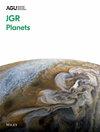The lithosphere of Mars accommodates horizontal shortening through folding and faulting, producing landforms described as wrinkle ridges or lobate scarps. Despite this nomenclature, we lack a deep understanding of the drivers of morphological differences observed between landform types. This study aims to develop a quantitative model for shortening landform classification based on surface morphology, subsurface architecture, and strain accommodation, facilitating interpretations of where and how lithospheric stresses are recorded. We developed this model by mapping 100 shortening landforms in a Geographic Information System, recording 12 unique geomorphic parameters such as length and asymmetry, and estimating the strain of each landform. We conducted a Discriminant Function Analysis (DFA) using surface morphometrics. This DFA produced a predictive linear function for categorizing wrinkle ridges and lobate scarps and for quantifying which landforms were exemplars within those categories. The three most influential variables on the surface morphometry DFA were the maximum width, forelimb slope, and back limb length. We then modeled the subsurface structural geology of 50 landforms using MOVE Structural Geology Modeling Software and conducted a second DFA based on subsurface metrics. DFA was most influenced by the dip and depth of the lower ramp base. When both surface morphology and subsurface geometry are input into single DFA, wrinkle ridges and lobate scarps can be distinguished quantitatively 96% of the time. Our results also show that lobate scarps accommodate more strain and imply that studies should consider landform type when interpreting local, regional, and global geological stress histories.



